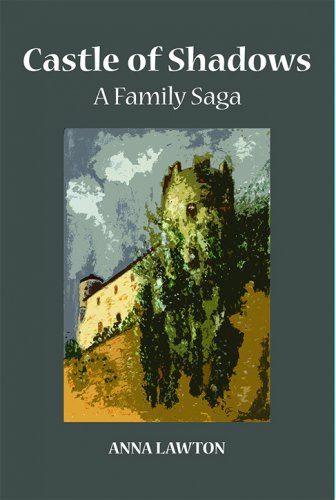
About the Author
Anna Lawton was born in Italy. The Cortanze Castle, which has inspired the present novel, once belonged to her family.
She has earned her PhD in Russian literature at UCLA, and taught courses in literature, film studies, and visual culture at Purdue University and Georgetown University. She published three scholarly books and several edited volumes, as well as numerous articles, essays, and book chapters. She has received the CHOICE Award as Outstanding Academic Title for her book, Imaging Russia 2000: Film and Facts. Her latest novel is Amy’s Story. She is a member of the jury for the most prestigious Italian book award, Premio Strega, and has served on the Advisory Film Committee of the National Gallery of Art.
CASTLE OF SHADOWS: A Family Saga
Anna LawtonThe Spring, 2019
374 Pages
ISBN 978-1-7330408-1-5 Paperback
ISBN 978-1-7330408-2-2 Hardcover
$38.00 Hardcover
For BULK ORDERS, order directly from New Academia Publishing.
Queries: orders@newacademia.com
About the Author
Anna Lawton was born in Italy. The Cortanze Castle, which has inspired the present novel, once belonged to her family.
She has earned her PhD in Russian literature at UCLA, and taught courses in literature, film studies, and visual culture at Purdue University and Georgetown University. She published three scholarly books and several edited volumes, as well as numerous articles, essays, and book chapters. She has received the CHOICE Award as Outstanding Academic Title for her book, Imaging Russia 2000: Film and Facts. Her latest novel is Amy’s Story. She is a member of the jury for the most prestigious Italian book award, Premio Strega, and has served on the Advisory Film Committee of the National Gallery of Art.
About the book
An Italian Downton Abbey, this enticing family saga unfolds on the background of Italian history from 1870 to 1950. The rich narrative tapestry includes a castle in the Piedmont countryside, three women, three generations, and a multitude of minor characters. It brings to the fore individual lives and human predicaments, personal feelings and universal themes. The lives of the three main characters, apparently ordinary, but actually tragic in their inexorable decline, are placed in a coral context that includes: the castle dwellers and the villagers, industrial entrepreneurs and socialist agitators, stars of the silent screen and working girls, American officers in WWI, fascist thugs and victims of the regime, a rogue and an honest prostitute, a singer of the Neapolitan varieté, a Russian prince, a descendant of Sir Walton the pirate, a band of partisans, a liberal priest, and even a domestic leopard.
The narrator, who is herself a character, claims an approximate knowledge of facts, which she gathered from personal memories, stories heard from various people, documents and letters, supplemented by the imagination where evidence is lacking. Most of all, it is the photos from the family album that stir her imagination. The use of various languages and dialects very effectively adds sound to the images.
Praise
“An elaborate and far-reaching tale that makes for compelling reading. A family saga that boasts ambitious, sophisticated, and controlled storytelling.”
— Kirkus Reviews
“The narrator, inspired by her family album, brings to life the shadows that still linger in their country castle. Captivating characters act out their lives against the background of historical turning points. A fascinating reading that reminds me of Downton Abbey!”
—Willee Lewis, Vice President, PEN/Faulkner Foundation.
“This novel is a large narrative fresco with visual impact, historical scope and sustained pace, which makes us think of Bertolucci’s cinematic epic 1900. It can also be regarded as a kind of Piedmontese counterpart to The Leopard.”
— Roberto Severino, Professor Emeritus. Georgetown University. Washington DC
“The reference to The Leopard is the first thing that comes to mind because of the analogous situation of an old prominent family experiencing its gradual decline, but also Buddenbrooks by Thomas Mann and The Family Moskat by Isaac Singer.”
— Riccardo Riccardi, composer, artist and author.
“It’s a beautiful story. The language is impeccable, not overly literary (unnatural), and not overly conversational (sloppy) either. It’s the perfect language for this story, a saga with its truth filtered through the fabric of narration. It’s the work of a novelist, not of a memoirist.”
— Camilla Baresani, author of four novels, the latest is Himalayan Pink Salt.





 Coming Soon
Coming Soon Awards
Awards